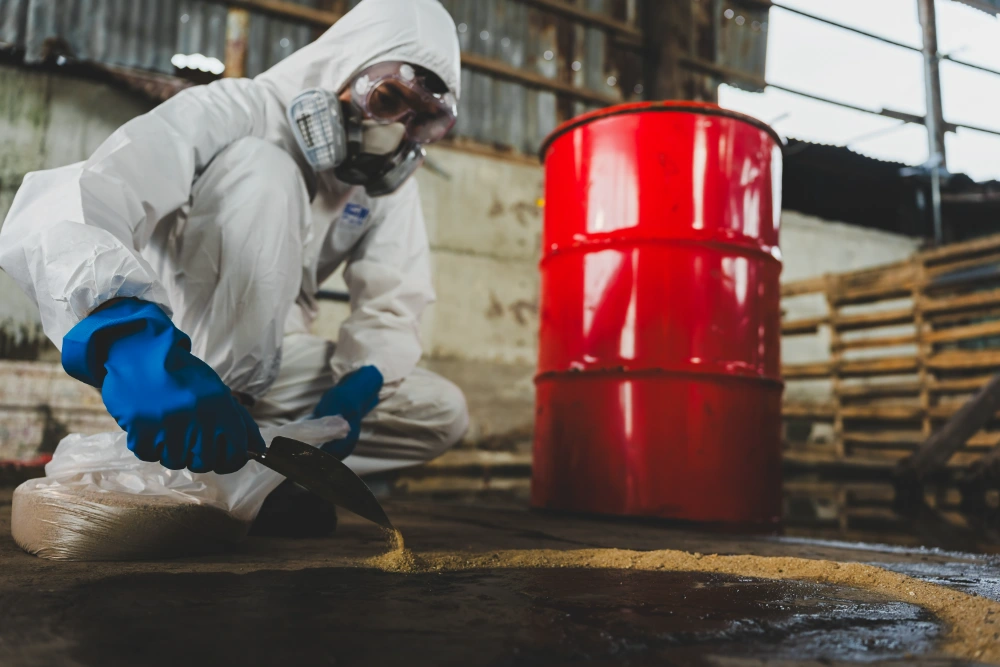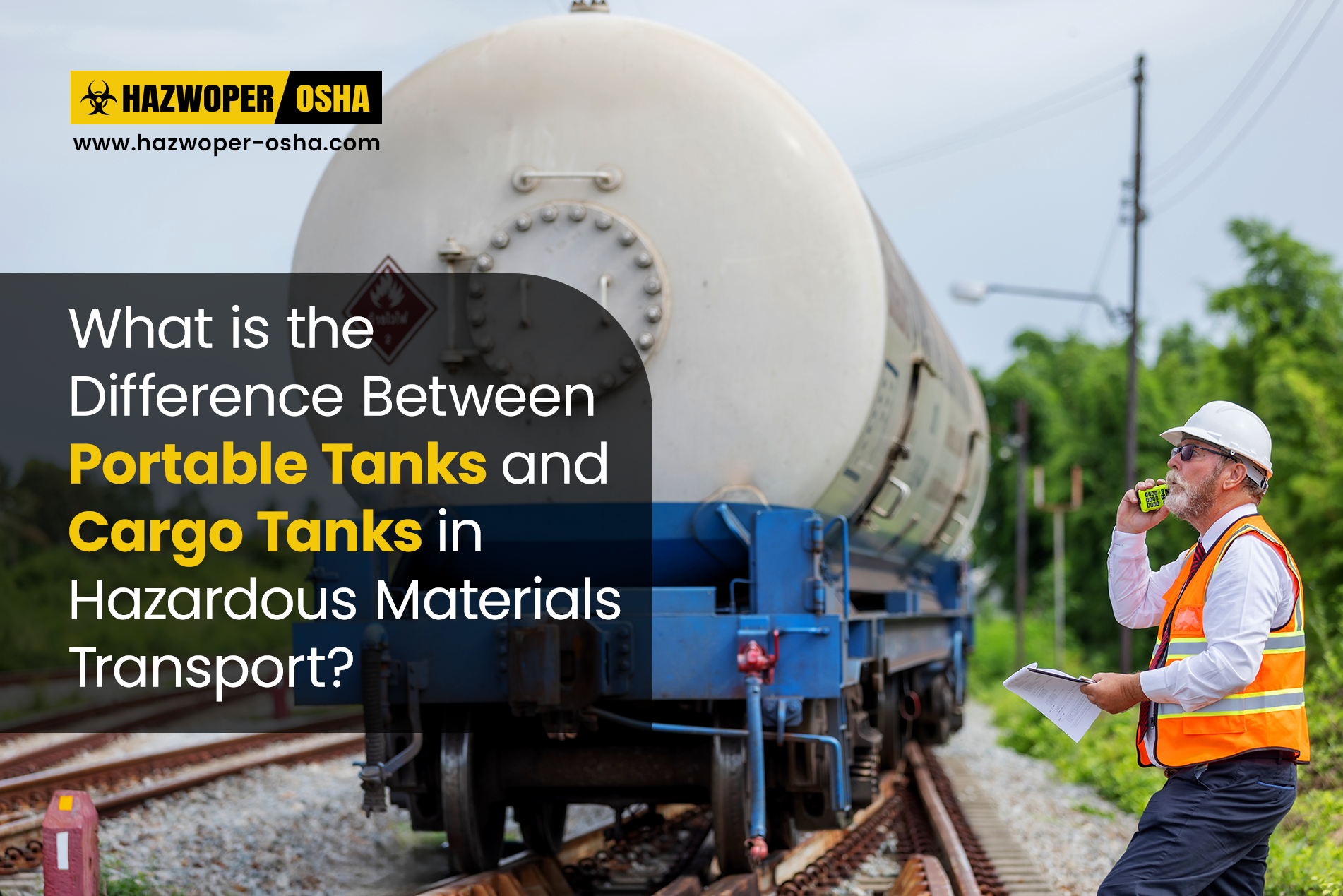Respirators are one of the most important types of
personal protective equipment (PPE). In hazardous environments, respirators are a critical component of the safety procedures that protect workers.
Regulations dictate using respiratory protection when working with hazardous waste, hazardous materials, or toxic chemicals. The various forms of hazardous materials and chemicals out there require different types of respiratory protection. Resultantly, there are various types of respirators available in the marketplace. Employers must decide on the right kind of respirator by considering the job tasks that expose and may potentially expose workers to different hazardous substances or hazardous working conditions.
 What is a Respirator?
What is a Respirator?
A respirator is a device worn over the nose and mouth to protect the wearer from inhaling hazardous substances, whether chemical, biological, or radiological. Respiratory protective devices consist of a facepiece connected to either an air source or an air-purifying device.
What is Respiratory Protection?
OSHA has identified the need for respiratory protection for workers exposed to various airborne hazards arising due to working in and around hazardous wastes and hazardous materials such as silica and hydrogen sulfide, toxic chemicals, and bloodborne pathogens. OSHA also recommends respiratory protection when workers carry out work operations in confined spaces and at excavation sites and trenches where the possibility of encountering hazardous atmospheres or insufficient oxygen levels exists. Respiratory protection mainly comes into play in situations where workplace engineering controls and modifications to work practices are unable to protect workers from these airborne hazards.
Accordingly, OSHA has developed
respiratory protection standards for General Industry (29 CFR 1910.134), Construction Industry (29 CFR 1926.103), and Maritime operations (29 CFR 1915.154, 1917.92, and 1918.102).
Types of Respirators
1. Particulate-filtering respirators
2. Chemical cartridge/gas mask respirators
3. Non-powered, or negative pressure respirators
4. Powered air-purifying respirators (PAPRs)
5. Self-contained breathing apparatuses (SCBAs)
6. Supplied-air respirators (SARs)
7. Pressure demand respirators
8. Continuous flow respirators
9. Full facepiece respirators
10. Half mask facepiece respirators
How do Respirators Protect Workers?
Respiratory protection is used to protect workers from inhaling contaminated air or other hazardous air-borne particles that would impact their good health and compromise safety. Respirators protect workers in case of a lack of or low levels of oxygen in the environment; toxic gases, mists, sprays, or vapors; harmful dust; hazardous fog; and smoke.
There are two main categories of respirators that protect workers in two ways:
- Air-purifying respirators (APRs) - which remove contaminants from the air, so workers breathe in clean non-contaminated air, and
- Air-supplying respirators (ASRs) - which provide breathable air for the wearer from an uncontaminated air source (e.g., an oxygen tank).
Often, a self-contained breathing apparatus (SCBA) is used when a different source of air supply is required to ensure workers do not breathe in air from contaminated sites or while working with toxic gasses. It is worth noting that according to OSHA Standards, SCBAs are mainly used in situations that are tagged as ‘Immediately Dangerous to Life or Health (IDLH)’.
To better understand the various types of respirators that are used in different hazardous circumstances, read the article titled ‘Effective Respiratory Protection: How to Choose a Suitable Respirator’.
Respiratory Protection Program
In a workplace where the use of respirators is necessary to safeguard the health of employees, employers must develop and implement a Respiratory Protection Program to comply with OSHA’s Respiratory Protection Standard. This respiratory protection program must include the following requirements:
• There must be a written operating procedure that details which respiratory protection will be used, and why.
• Respirators must be selected based on the specific hazards prevalent at that worksite and to which workers are or may be exposed.
• Workers should be given training on the uses and limitations of respiratory protection equipment (RPE) they will be using at the worksite.
• Respirators must be regularly cleaned, disinfected, and stored in a clean, secure, and convenient location.
• Respirators should routinely be examined and tested.
• When required, respirators must be repaired or replaced, as needed.
• Employers must consistently monitor working conditions and employee stress and exposure.
• Before employees use respirators, fit testing must occur to ensure that the respiratory equipment fits each employee properly.
• Medical examinations must be conducted, and medical professionals should determine whether employees are physically able to use respiratory equipment.
• The respiratory protection program must be regularly evaluated to ensure effectiveness and reflect any changes in the worksite, and for recommending improvements as required.
 Choosing the Right-Fit Respirator
Choosing the Right-Fit Respirator
To ensure proper respiratory protection, employers and employees must not only
choose the right-fit respirator but also the correct respirator for the job. Here are three questions that must be answered before workers can begin using a respirator.
Question 1: What type of respirator do I need to wear?
First, a decision must be made on the type of respirator that a worker needs to wear. Consider the type of hazardous exposure – is it a gas or vapor exposure or a possible situation of contaminated air or low oxygen levels? Accordingly, either an APR or an SCBA respirator may need to be decided on. Also, consider things like the use of a half-face respirator or a full-face respirator, and what type of filter cartridges must be used based on required filter efficiency and compatibility.
Remember, to meet OSHA regulations, employers must provide employees with respirators that are approved by the National Institute of Occupational Safety and Health (NIOSH). This is because NIOSH ensures respirators undergo rigorous testing to increase the protection afforded to the wearer.
Question 2: Is it safe for me to wear a respirator?
When workers are required to wear a respirator at the workplace to safeguard against hazardous vapors or toxic atmospheres, they must be sure that wearing a respirator will not have any negative impact on their health. Individuals who suffer from asthma, high blood pressure, chronic bronchitis, or other lung and breathing problems may be at risk when using respirators. This is because when wearing a respirator, extra pressure is put on the lungs that may cause blood pressure to rise. Thus, employers must send employees for a medical evaluation before they start wearing respirators at the worksite. It is also required that a Physician or Other Licensed Healthcare Professional (PLHCP) conduct and clear workers for them to be able to use respirators at the workplace.
Question 3: Do I require fit testing/training before using the respirator?
The answer to this question is a resounding YES!
To ensure workers can gain the highest levels of protection from respirators, they must undergo a fit test once medical clearance is received for wearing a respirator. The fit testing process helps determine the proper size and type of respirator for each employee as well as checks if the respirator forms a seal on the user’s face to ensure no contaminants are accidentally inhaled.
One part of the fit testing process requires employees to be given respiratory protection equipment and shown how to put it on and take it off. Then, the employee is allowed to choose the size and weight of the equipment components to ensure a comfortable fit. Once the employee chooses the desired respiratory equipment, a seal check is performed. If the seal isn’t tight, the employee will choose a different size or style or equipment that may fit his/her body better.

As per OSHA’s respiratory protection standards, employees must perform several different exercises while wearing the respiratory for 1 minute each. These testing exercises include normal breathing, deep breathing, moving the head from side to side and up and down, talking out loud, and bending at the waist or jogging in place.
It is worth noting that fit testing is mandatory for all positive or negative pressure, tight-fitting facepiece respirators.
OSHA’s Respiratory Protection Standards recommends employees be fit tested before the initial use of a respirator in the workplace, whenever a new or different facepiece is used, and annually for safety and protection.
Two types of fit testing can be conducted – a qualitative fit test and a quantitative fit test. We will discuss this in more detail in our next blog article.
In Conclusion
Adhere to Respiratory Protection Regulations!
To ensure workers receive the highest levels of respiratory protection based on their workplace exposure to airborne hazards, workers must understand the need for respiratory protection and be given appropriate training.
All our safety training courses include a section on respiratory protection aligned with OSHA standards. Training courses such as the OSHA 40-Hour HAZWOPER course have a dedicated module with five lessons explaining the various aspects of ‘Respiratory Protection’.
Enroll employees in HAZWOPER and OSHA training to ensure they are protected against respiratory hazards while meeting all relevant respiratory protection requirements as recommended by OSHA.

 What is a Respirator?
What is a Respirator? Choosing the Right-Fit Respirator
Choosing the Right-Fit Respirator As per OSHA’s respiratory protection standards, employees must perform several different exercises while wearing the respiratory for 1 minute each. These testing exercises include normal breathing, deep breathing, moving the head from side to side and up and down, talking out loud, and bending at the waist or jogging in place.
As per OSHA’s respiratory protection standards, employees must perform several different exercises while wearing the respiratory for 1 minute each. These testing exercises include normal breathing, deep breathing, moving the head from side to side and up and down, talking out loud, and bending at the waist or jogging in place. 
 EN |
EN |  ES
ES

































































































































